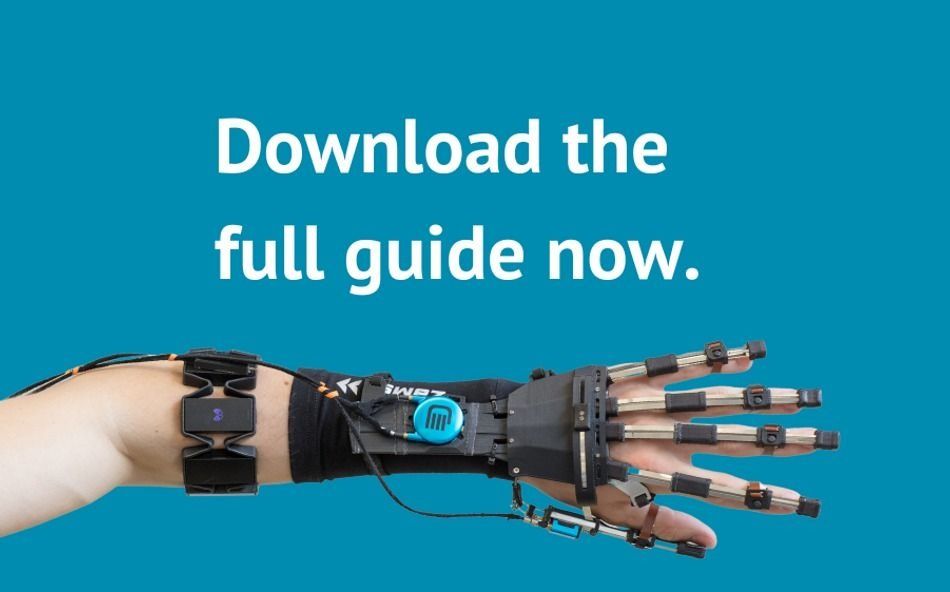When & How to Use the igus 3D Printing Platform for Wear-Resistant Plastics
Article #4 of The Engineer’s Guide to 3D Printing with Wear-Resistant Plastic Materials.
This article is a chapter from our comprehensive report on 3D printing with wear-resistant plastics. If you're interested in diving deeper and accessing the full report, we invite you to download it below. Gain a holistic understanding and benefit from the complete insights we've gathered. Don't miss out!
High-quality 3D-printed motion parts
Wear-resistant 3D printing materials from igus provide engineers with the tools to create high-quality 3D printed motion parts like slides, bearings, gears, and rollers with an exceptionally long service life. These open materials are compatible with most additive manufacturing hardware and have a high level of printability, requiring the same level of expertise as standard 3D printing materials.
Of course, some engineers and manufacturers require high-quality motion parts but do not have access to in-house 3D printing equipment. For such customers, igus offers an online platform for its in-house 3D printing service, through which users can upload a CAD model, choose a material and post-processing options, then order 3D printed parts directly from igus. The on-demand service is ideal for customers requiring prototypes and medium volumes of end-use parts.
This article provides a detailed overview of the igus 3D printing service and its corresponding iglidur Designer online platform, explaining the key advantages and unique features of the igus platform compared to basic 3D printing service bureaus.
What makes the igus 3D printing platform unique?
The igus 3D printing platform is unique because it combines three tools in one:
- Pricing for the unique part, material, and quantity
- Automatic DfM analysis of whether the part can be produced based on its wall thickness and other features
- Lifetime calculation of the printed part
The lifetime calculation of 3D-printed parts is especially notable. Having this feature in an online tool that everyone can use without a login is truly unique. The biggest advantage of this feature is the time it saves the user during testing. Users can pick the best solution for their application, taking into account price, lifetime, and other special requirements.
How is the lifetime calculated?
Developing long-lasting plastics and calculating their lifetime is a key unique selling point for igus, made possible by the company operating a 3,800 m² lab — the largest in the industry — and conducting more than 15,000 tests each year. Test results are added to a large database, logging different wear rates at different speeds, loads, moving types, and many more parameters.
These results are used to make the lifetime for sliding applications calculable. After uploading a CAD model to the online 3D printing platform, the lifetime calculation within the online tool is done in three steps:
- Click the button "Calculate the service life”
- Select the sliding surface of your component by mouse click
- Enter some additional application parameters and click “Calculate”
As a result, the user is shown the expected lifetime in hours for each available material in the overview, so that at the end the user can compare the feasibility, properties, lifetime and price of each material.
Why use a third-party service over in-house 3D printing?
Most engineers understand the benefits of in-house 3D printing. Companies that regularly require one-off plastic prototypes or custom spare parts can often see a quick return on investment on a 3D printer, especially if they have previously used traditional technologies for prototyping. And no third-party service can deliver parts as quickly as in-house production.
So what are the arguments for using third-party 3D printing services instead of buying an in-house printer? Although 3D printing hardware can be a good investment for many companies, there are many reasons why using a professional service can be advantageous.
Order frequency
One of the main reasons why customers use a third-party 3D printing service is that they do not require 3D printed parts at a frequency that justifies investment in hardware. 3D printers require a skilled operator, regular maintenance, and further investment in materials, and this time and cost cannot be justified for infrequent prototypes or very small volumes of parts.
Specialty materials
Demand for specialty materials is another reason why an engineer might turn to a 3D printing service — even if they do have an in-house 3D printer for printing standard materials. Although igus tribo-materials are easy to print, some engineers might need 3D printed motion parts at a frequency that does not justify investment in the raw material.
High-quality hardware
3D printers vary greatly in price. While low-cost FFF hardware can cost under a thousand dollars, SLS systems typically cost hundreds of thousands. Companies that can afford an in-house FFF printer may not be able to afford an SLS system or a high-temperature, industrial-grade FFF printer.
By contrast, 3D printing service bureaus typically operate a large fleet of high-end 3D printers to which customers can gain access without large capital expenses.
Trial, test & transition
Newcomers to 3D printing will often use a 3D printing service before investing in their own hardware. This allows the user to conduct feasibility analysis on the printed parts; if successful, customers may ultimately transition to in-house printing.
Expertise
Another reason why many engineers use a 3D printing service is to exploit the expertise of a seasoned 3D printing professional. By outsourcing the production of their 3D printed parts, companies can leverage the experience of the service bureau: the operator will know the best way to handle the material, prepare the build surface, optimize the slicing parameters, and prepare the parts for post-processing.
For this reason, some companies will use an in-house printer for prototyping but outsource high-value parts to a third-party service.
Overview of the igus 3D printing service
As well as providing ready-to-use 3D printing materials in filament, powder, and resin form, igus offers a full-scale 3D printing service, allowing customers to order complex motion parts in low-friction igus materials. No other 3D printing service bureau provides access to igus tribo-materials for motion parts.
To use this service, customers can upload their CAD files (STEP or STP) to the online tool and choose their preferred printing options, and can expect to have their parts shipped within a matter of days. For non-designers, it is also possible to instantly generate standard parts like gears and bearings by inputting dimensions and a few other parameters into the 3D print CAD configurator tool. All of these tools can be used free of charge without the creation of a login.
Key benefits
- Global: production facilities in Germany, USA, and China
- Professional: operations handled by igus 3D printing engineers
- Unique: wide choice of igus self-sliding 3D printing materials with up to 50x greater wear resistance than standard materials
- Lifetime: Online calculation of the part service life, using the wear results igus has recorded in hundreds of tests
- Simple: instant parametric design of standard parts like gears, bearings, and screw nuts via CAD configurator
- Transparent: up-front pricing and lead times plus helpful service life calculator for estimating lifespan of printed motion parts
- Fast: parts shipped within a matter of days
Model
Users can upload their own STEP or STL files to the online 3D printing service via the simple drag & drop interface.
Alternatively, they can auto-generate custom moving parts for free using the CAD configurator, a simple online parametric design tool provided by igus. Available parts include lead screw nuts, sliding elements, bearings, belt pulleys, rollers, gears, and racks. Users can select the desired part style and dimensions, then export the CAD file in their chosen format.
Material
The igus 3D printing service makes it easy to choose a printing technology and material. Customers unsure of the best iglidur material for their parts can select from a list of requirements and the platform will filter out any unsuitable materials. Additionally, the table of options lets the user quickly compare the delivery time, price, precision, and flexural strength of each material.
When choosing a material, customers can also exploit some helpful features of the 3D printing platform. For instance, users can calculate the service life of the proposed part by inputting a few parameters such as the working temperature and minutes of pure movement per hour.
Note that users can also use the 3D printing platform to order injection molded parts made with metal 3D printed tooling. Lead times are longer for molded parts than for directly 3D printed parts, but customers can choose from a wider range of materials.
Post-processing
The iglidur 3D printing platform gives users several post-processing options for their 3D printed parts. These include black dyeing, chemical smoothing, and slide grinding, as well as options for machined holes and machined threads. Users can also request custom post-processing, for which igus will provide a quote once assessed.
Producibility
As soon as the CAD file is uploaded, users can verify that the design is printable. The igus manufacturability analysis tool checks that the design, material, and technology are fully compatible by analyzing features such as wall thickness and available build space.
Customers can try the igus 3D printing service for free, without creating a login, either uploading their unique CAD models or using the CAD configurator for the fast creation of standard parts.
The Engineer’s Guide to 3D Printing with Wear-Resistant Plastic Materials
Explore the transformative world of 3D printing as we delve into the intricacies of using wear-resistant plastic materials. This guide offers engineers a comprehensive overview of material properties, applications, and best practices. Unlock the potential of durable plastics and revolutionize your manufacturing processes.
About igus
igus is a manufacturer of high-performance polymers for movement, based in Cologne (Germany). We have been developing and producing so-called motion plastics, innovative products made from...




